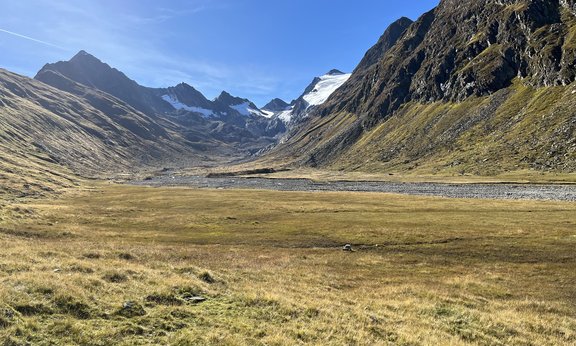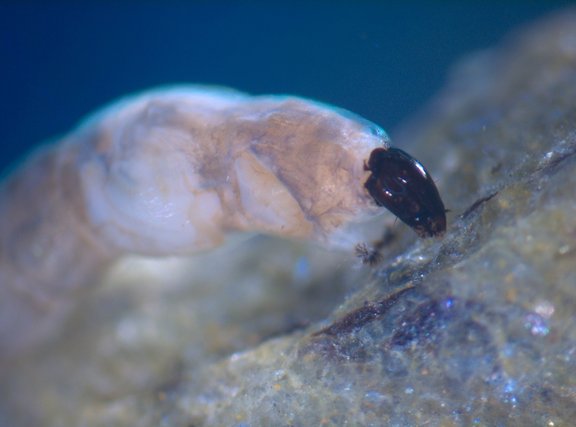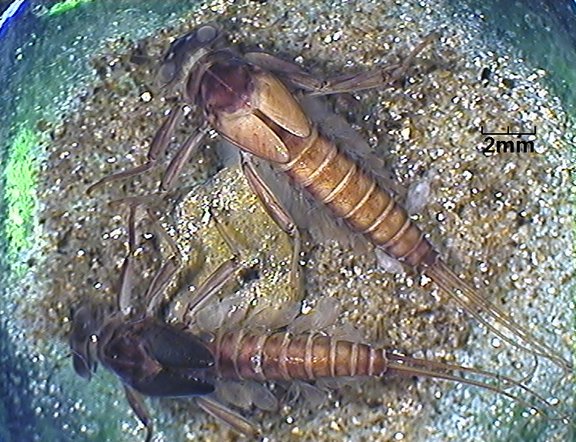Using the example of the 15 most important alpine invertebrate species, such as mayflies, stoneflies, caddisflies andnon-biting midges, as well as worms such as the alpine flatworm, the research team modelled for the first time the effects of the climate change on freshwater biodiversity in the entire European Alpine region for a period up to 2100. Glacier, landscape and biodiversity mapping data from the Alps were combined for this purpose. Leopold Füreder, head of the "River and Conservation Research Group" at the Department of Ecology, contributed analyses of the development of these cold-water species, especially from the glacier region of Rotmoostal in the rear Ötztal of Tyrol, to the modelling. The researcher has been closely studying the rivers there for 20 years.
Cold-adapted specialists
"The larvae of aquatic insects and flatworms, as they occur in glacier-fed and springfed streams of springs in the high alpine region, are highly specialised for their cold habitat and play an important role in the food chain. Due to the increase in temperatures, on the one hand the glaciers are melting, on the other hand the water in the streams is also warming. As a result, their refugia are shifting to ever higher altitudes or, in the worst case, disappearing completely - with consequences for the entire alpine ecosystem. The cold-water species have no choice but to flee to even higher altitudes, as long as that is still possible at all," Füreder explains. In the short term, glacier rivers will carry more water due to melting, but in the long term, the amount of water will decrease and the water temperature will increase even more. The ecologist sees the risk of a chain reaction here: "We will then have a lack of food in the form of aquatic insect larvae, for example, for fish at lower elevations such as the brown trout, but also for terrestrial animals such as birds, beetles and spiders, which feed on the adult aquatic insects, this means cuts in food availability."
Expand protected areas
The few areas that remain as habitats for the species communities that specialise in the cold habitats should therefore be specially protected, as the authors emphasise. Only about 12 per cent of the refuges that will still exist by the year 2100, according to the modelling, are located in current nature reserves. "As the situation will continue to worsen due to rising temperatures, we must assume that the pressure on the remaining glacier areas will also increase. The search for snow-safe ski areas is just as much an issue as the expansion of hydropower," says Leopold Füreder. "Glacier protection - and thus protection of biodiversity - therefore also means increasingly declaring the glacier forelands as nature reserves."
Publication
Glacier retreat reorganizes river habitats leaving refugia for Alpine invertebrate biodiversity poorly protected. Wilkes, M.A., Carrivick, J.L., Castella, E. et al. Nature Ecology & Evolution (2023). DOI: 10.1038/s41559-023-02061-5



